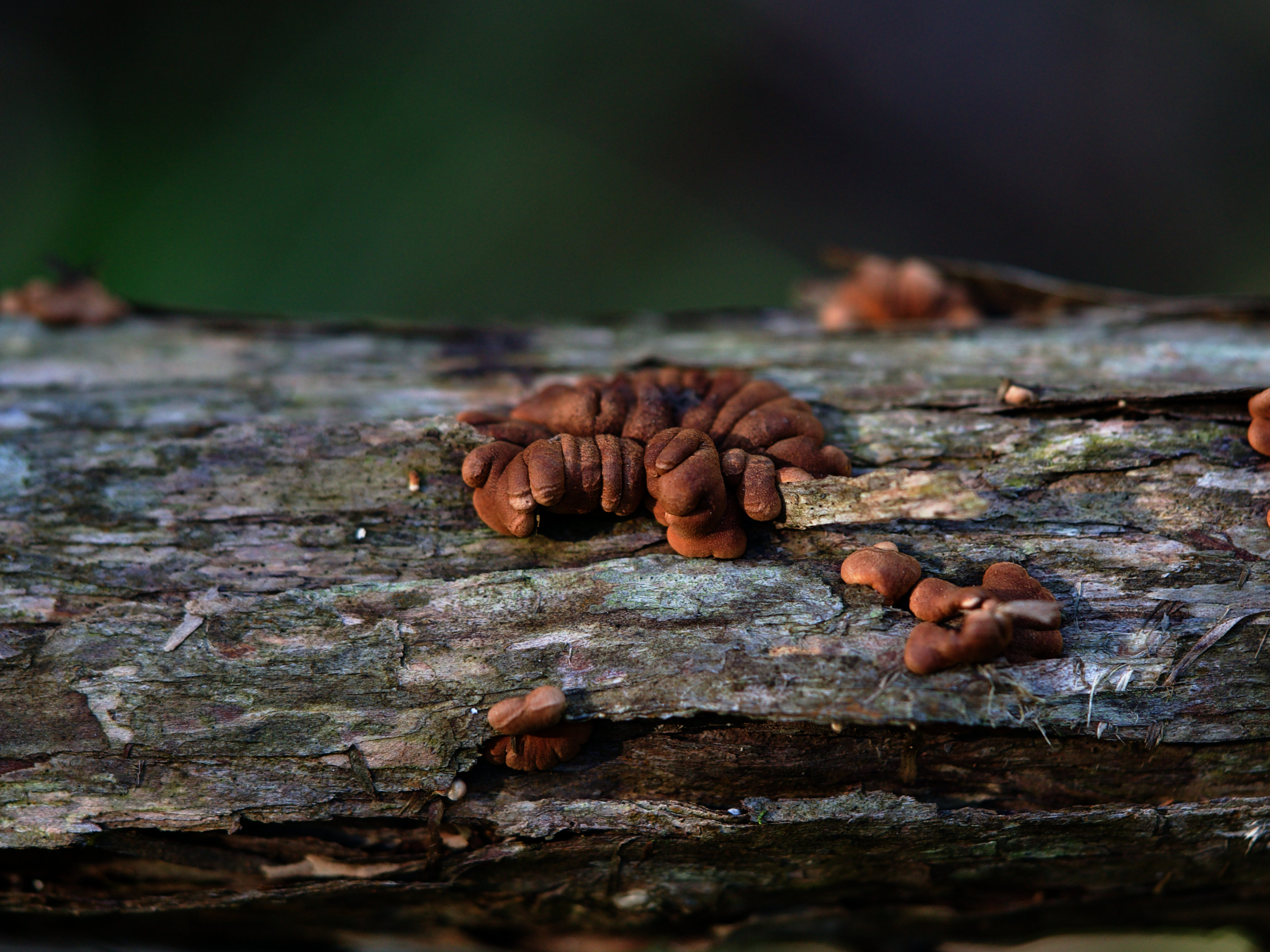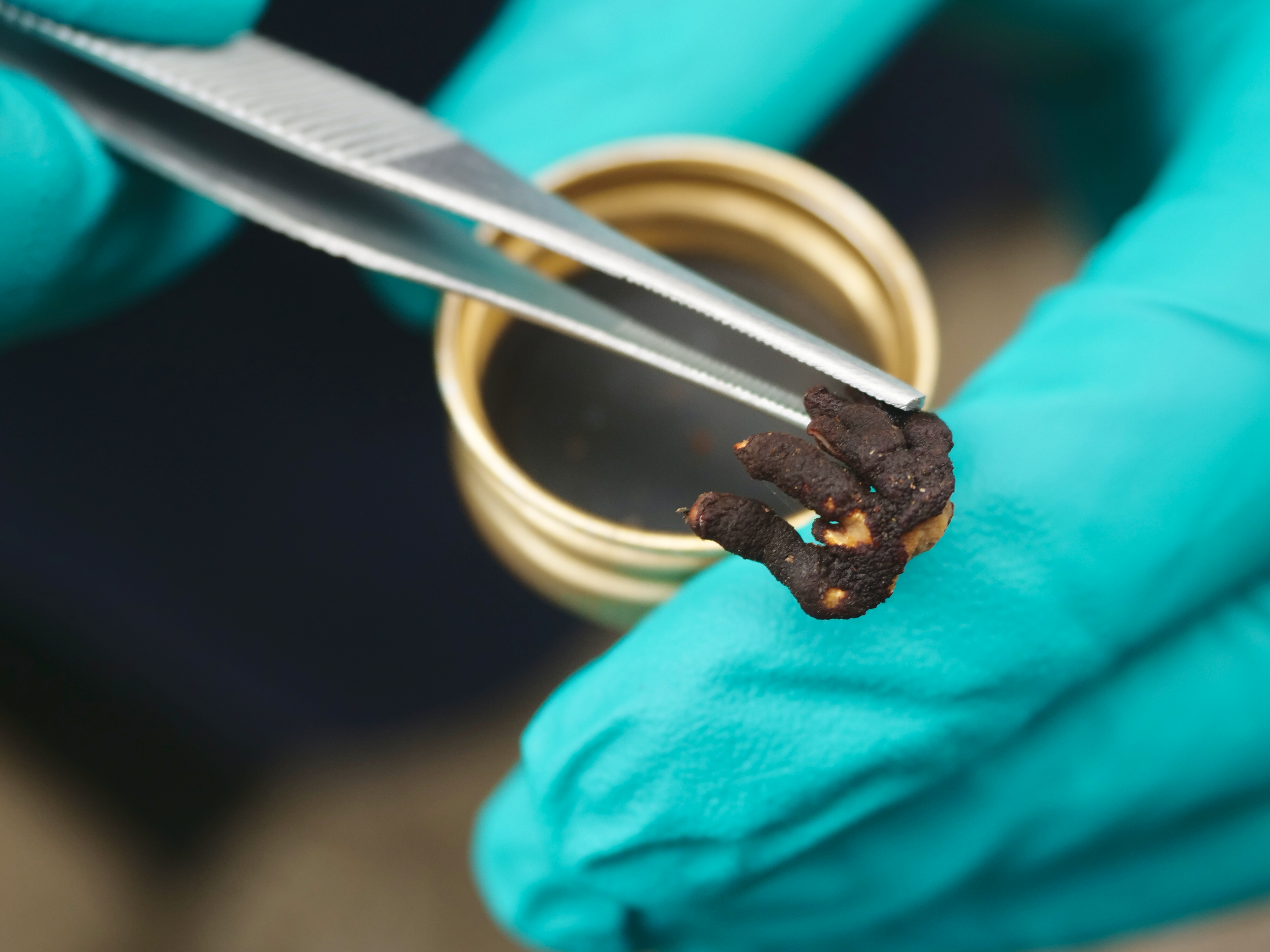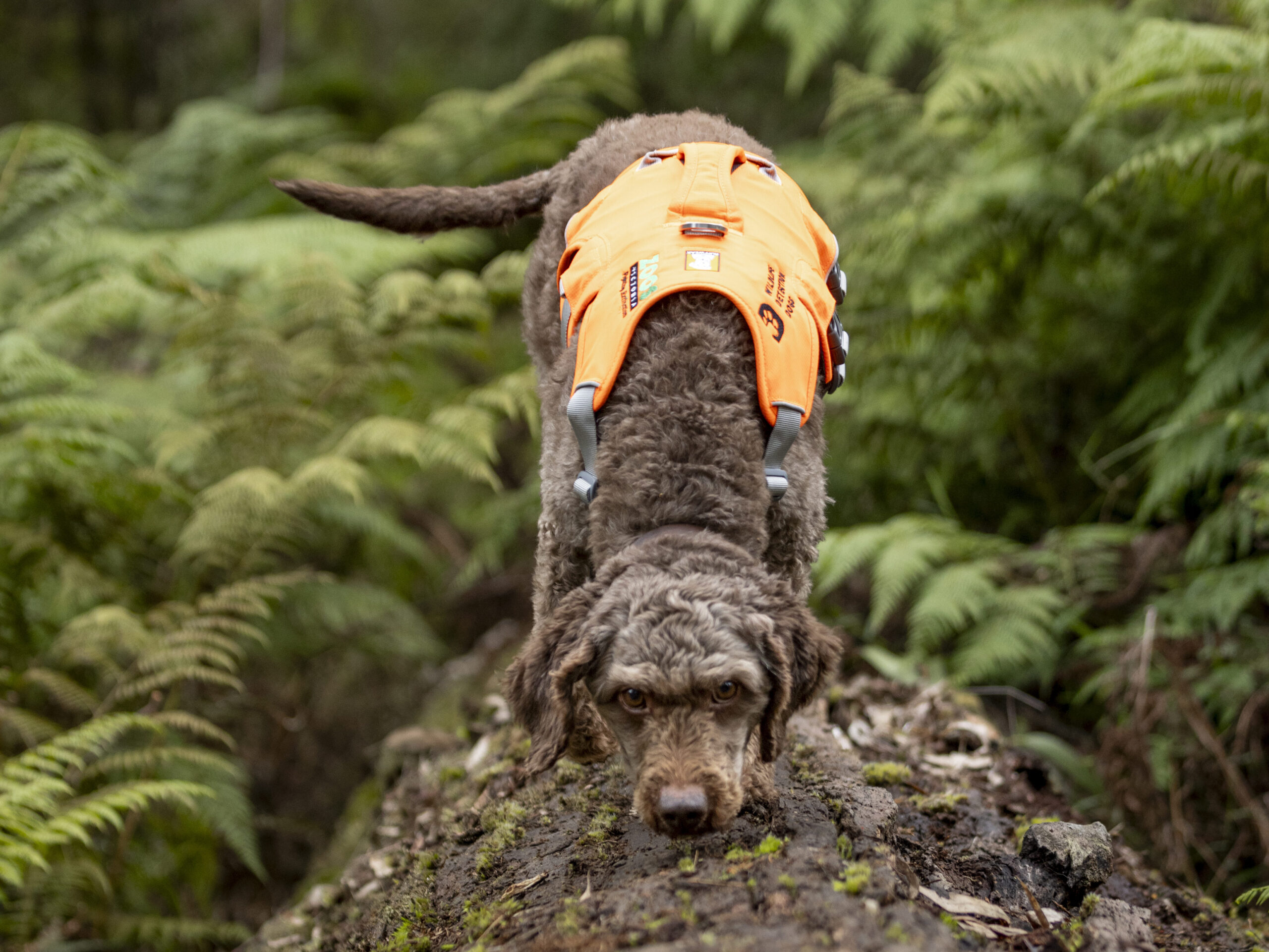On the nose: wildlife detection dog successfully trained to find rare ‘finger’ fungus

Scientists from Royal Botanic Gardens Victoria (RBGV) have joined forces with handlers from Zoos Victoria’s Wildlife Detection Dog Squad to sniff out one of the world’s rarest fungus species.
Daisy, a seven-year-old Italian water-dog from Zoos Victoria’s Wildlife Detection Dog Squad, was put to the test in a recent study comparing her ability to locate critically endangered tea-tree fingers (TTF) to that of highly skilled human surveyors.
The study, published in iScience in April 2024, revealed Daisy outperformed humans by detecting more TTF specimens in a shorter amount of time, while producing fewer false negatives in the process.
It’s the first time wildlife detection dogs have been used in fungi conservation.
The fungus
Tea-tree fingers (Hypocreopsis amplectens) is a unique-looking fungus that resembles dark, chubby fingers clutching a piece of wood. The critically endangered species has been sighted in just six known locations in Victoria in the past decade, with populations varying from a single specimen to dozens.
Lead author Dr Michael Amor, from RGBV, describes TTF as a “very specialised species” that needs a precise recipe of environmental conditions in order to occur. This is partly because TTF is most likely a mycoparasite – a fungus that parasitises other fungi species.
“TTF obtains its food from another fungus,” Michael says. “That means the right plants have to be abundant to suit the wood-rotting host fungus.”
Host plants for TTF include flowering shrubs common in the region, such as prickly tea-tree (Leptospermum continentale), silky tea-tree (Leptospermum myrsinoides), prickly broom heath (Monotoca scoparia) and Yarra burgan (Kunzea leptospermoides), as well as other less-common species.

Michael says the presence of TTF in an area indicates the health of an environment. “TTF’s rarity speaks quite loudly about the degraded state of the entire east coastal ecosystem that we have in Victoria,” Michael says. “That means it’s incredibly vulnerable to the impacts that humans are having on the environment.”
It’s no coincidence that the largest-known population of TTF is found inside French Island National Park, about 60km south-east of Melbourne. It’s the only TTF population inside a national park, and the populations are healthier and more abundant compared to those seen on the mainland.
“That’s a direct reflection of the habitat protection that are in place and the general health of the environment on French Island within that national park, compared to the relatively under-protected sites on the mainland,” Michael says.

Threats to TTF include urbanisation and habitat loss, sand mining and climate change. TTF’s small population size means a single extreme weather event such as a fire could wipe out an entire population.
“We also haven’t seen TTF anywhere there’s been fire in the past two decades,” Michael says. “So post-fire colonisation is very slow. That’s another thing to add to the list of what makes TTF so picky and potentially so rare.”
The fungus’s scarcity makes researching it a challenge – TTF remains a bit of an enigma to scientists. Researchers know certain types of moth larvae eat the fungus, for example, but are still speculating about the other animals that may feed on it.
“Things are eating it, potentially as a primary food source…but we don’t know if that’s helping or harming [the fungus],” Michael says. “It could be harmful if it’s removing the entire reproductive potential of that specimen, but it may be helping in that by doing that it’s ingesting all the fleshy material and helping to disperse the spores as it moves along. That’s a critical bit of information that would be very helpful for us to know.”
Call in the hounds
And that’s where wildlife detection dogs, like Daisy, come in. Italian water-dogs (also known as Lagotto Romagnolo) have historically been used to find truffles. Instead, Daisy was trained to detect TTF by her handler, Dr Nick Rutter, Zoos Victoria Wildlife Detection Dog Officer.
“All of Zoos Victoria’s wildlife detection dogs are trained to detect their target species using positive reinforcement, pairing the smell of the species with a reward,” Nick says. For some dogs, this might be a tennis ball or a tug toy, but Daisy is mostly motivated by praise, engagement and play. “During initial training, Daisy learnt that sniffing the unique odour of tea-tree fingers was exciting because it meant that she received lots of snacks, pats and cuddles from me.”

But sniffing out a mycoparasite is no easy feat; TTF’s sporing body is partially made from the tissue of its host, creating an “in-built scent contamination for Daisy to contend with,” says Michael. But Daisy proved capable of ignoring this host fungus.
“You can usually tell when Daisy has caught a whiff of TTF because she starts to get excited. Her happy tail wags, then her whole bum wiggles and her sniffing rate increases as she works to pinpoint the exact location of the fungus,” says Nick. “Once she’s confident she has found it, Daisy alerts by sitting and looking at me with a big grin on her face to let me know she’s found the special fungus and that it’s time for me to come over and have a party with her.”
Daisy’s skills extend beyond her nose. She’s able to move easily through fragile habitats and crawl through small gaps in vegetation without damaging the surrounding plants. “Daisy is a great TTF detection dog because she naturally moves carefully through fragile environments, she can search for a long time without giving up and she isn’t distracted by wildlife that we might come across while searching,” Nick says.






